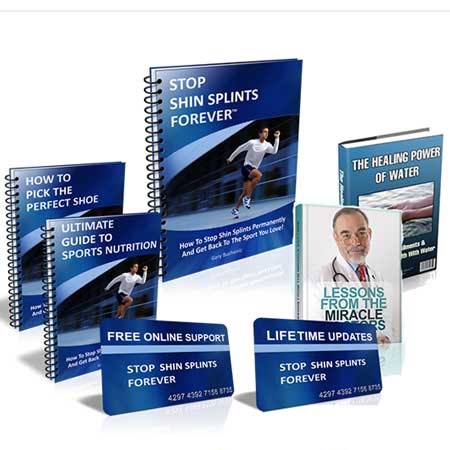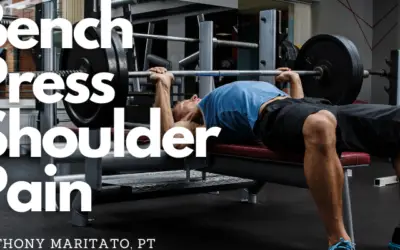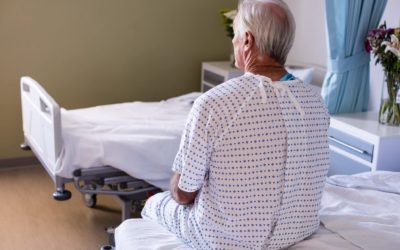Tight Calf Muscle After Knee Replacement
The Most Common Causes of Calf Pain and a Tight Calf Muscle after Knee Surgery
Deconditioning and Weakness Due to Pain
A tight calf muscle is often caused by muscle weakness and atrophy.
Before surgery, patients are experiencing such intense knee pain that they are unable to perform their normal daily activities. They are walking less, they probably stopped running or jogging, and they definitely have been unable to do any jumping, leaping, or bounding.
As a result, the gastrocnemius and soleus muscles become so weak and atrophied that any increase in walking after surgery causes a major increase in pain and soreness.
Patients will often tell me that they spent months or even years before surgery walking less because the knee felt unstable or they would be so sore that for the next two or three days they couldn’t function.
Post Surgical Pain and Swelling
On the day of surgery, you will be up standing, and walking before discharge. As a result of the surgery, you will experience increased swelling and fluid drainage into the lower leg and ankle. This swelling will cause soreness and possible calf pain.
You will be advised to perform ankle pump exercises and you will be told to stand and walk every 2-3 hours for the first couple of days after surgery. This too will result in the calf muscle getting more exercise than it is used to and as a result, you will experience more muscle soreness than normal.
Imagine if you have not exercised for a couple of years and then all of a sudden you are doing more exercise in 24 hours than you have done in three months. You can imagine the soreness.
How do I know it is not a blood clot?
According to WebMD, the most common warning signs of a blood clot after surgery include:
-
- Increased redness or discoloration that worsens over time.
- Increased warmth around the calf muscle.
- Pain when you gently squeeze the calf muscle.
- Calf pain at rest and with an activity that doesn’t improve.
- Shortness of breath.
If you have any of the above signs or symptoms immediately contact your surgical team to go to your local emergency room for further diagnostic testing.
What You Can Do To Reduce Calf Pain & Tightness After Knee Surgery
Part 1 – Recovery is more important than exercise.
Muscles become stronger and healthier during the recovery phase. If you are not sleeping well, eating well, and you are struggling to get your pain under control then you are most likely not recovering as quickly as you may need between bouts of exercise.
Consider taking more frequent rest breaks between physical therapy exercises. Ask your therapist for suggestions on ways to improve your sleep quality.
Consider researching information about mindfulness and ways to improve recovery between workouts.
Part 2 – Massage to improve recovery after total knee replacement
Massage is a great way to improve healing. My personal favorite is the rolling pin massage. I often recommend patients use a rolling pin to massage the upper thigh and calf muscle 3 times a day for 3 minutes per episode as a way to improve lymphatic drainage, facilitate fluid exchange, and reduce pain sensitivity.
* In this video I share some techniques for you to perform a rolling pin massage at home.
Part 3 – Gradually increase your endurance and strengthening exercises
Your calf muscle is a high endurance muscle. The calf is designed to move your body around all day long. But when it is weakened from decreased activity and surgery, it will take time to get back into shape.
If you work the muscle too much or too fast you will experience more tightness and pain.
A great “rule of thumb” is to perform your prescribed exercises.
“To assess your response that same night or the next day. If you find that your muscle is tighter and more painful then you either need to perform fewer repetitions or reduce the resistance during the next exercise session, or take longer rest breaks between exercise sessions.”
Recommended Product:
This wedge is by far my favorite tool to stretch the calf muscle. We use this daily in the clinic with all of our patients. They are highly durable and inexpensive.
BONUS:
Along with calf tightness and pain, many patients report severe thigh pain after a total knee replacement. In the following video, I explain why your thigh hurts so much after a knee replacement surgery and how you can use the same rolling pin massage technique mentioned about to treat this condition.

Anthony Maritato, PT
Physical Therapist
Anthony Maritato, PT has been a licensed physical therapist and private practice owner since 2006. Ohio license #PT011602.
Anthony has been passionate about helping patients recover from total knee replacement surgery as well as rotator cuff repair surgery.
More Blog Posts …
Bench Press With Shoulder Pain: A Comprehensive Guide
I have been a physical therapist since 2006 and a certified strength coach since 2001. If there is one thing I have learned over the past 22 years it is that pain does not always mean danger or damage. A simple rule of thumb for guiding your decision to stop an...
Surgery Clothes: What to wear for a total knee replacement surgery
Best Surgery Clothes for Before, During, and After your Knee Surgery I have been a licensed physical therapist since 2006 and have worked with hundreds of patients who underwent total knee replacement surgery over the past 16 years. One thing nobody prepares for are...
Muscle Spasm in Shoulder
Understanding and Treating Muscle Spasms in the Shoulder Muscle spasms in the shoulder can be incredibly uncomfortable and can significantly limit your range of motion and daily activities. Whether it's a sudden, involuntary contraction or a persistent tightening of...



